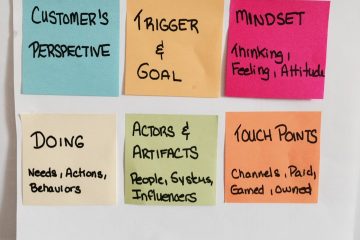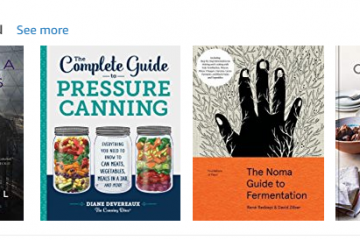“Well, as a user, I wouldn’t do that.”
“Our users aren’t going to worry about that.”
“It’s my project. I know what users think.”
We’ve all heard comments like this. These are phrases UX professionals do not say. As designers, we are not the users. We don’t know what they would do or how they think. No amount of training or expertise tells us what is going on in users’ heads. We can research, observe, ask, and surmise. And when we take the time to better understand them, we can empathize.
Empathy is a critical part of human-centered design. There are endless conversations about its importance in user experience work, but few focus on how to help others achieve it. As researchers, when we experience a user’s struggle first hand, feel the frustration, and hear their words, we can’t help but empathize. But behind every UX’er is a team, a client, or a company CEO that wasn’t there. They don’t understand the users wants and needs. It is our job to help them–but how? Try empathy mapping.
UX professionals often face challenging situations where colleagues and stakeholders default to their own opinions and feelings and forget about the intended target audience. While an empathy mapping session won’t alter a company culture that doesn’t value user research, it can help focus participants on users by putting them “in their shoes” when interacting with a product or service.
What is an empathy map and why create one?
An empathy map is a simple, easy-to-digest visual that captures knowledge about a user’s behaviors and attitudes. It is a useful tool to helps teams better understand their users. Empathy mapping is a simple workshop activity that can be done with stakeholders, marketing and sales, product development, or creative teams to build empathy for end users. For teams involved in the design and engineering of products, services, or experiences, an empathy mapping session is a great exercise for groups to “get inside the heads” of users.
Creating an effective solution requires understanding the true problem and the person who is experiencing it. The exercise of creating the map helps participants consider things from the user’s perspective along with his or her goals and challenges.
Empathy maps are most useful at the beginning of the design process after user research but before requirements and concepting. The mapping process can help synthesize research observations and reveal deeper insights about a user’s needs. (The maps are most effective when based on research data, but like provisional personas, can be built using knowledge from internal participants or using existing personas.) It can help guide the construction of personas or serve as a bridge between personas and concept deliverables.
When included in early project stages, the exercise helps teams enter the user’s world and approach things from his or her point of view before creating solutions—whether it’s ideas for content, a webpage design, app prototype, or new service offering. The benefits include:
- Better understanding of the user
- Distilled information in one visual reference
- Callouts of key insights from research
- Fast and inexpensive
- Easily customizable based on available information and goals
- Common understanding among teams
The maps can also be used throughout the design process and revised as new data becomes available. A sparsely populated map or a session that reveals more questions than answers indicates where more user research needs to be done.
Empathy mapping is not a replacement to journey mapping.
Customer-focused explorations have garnered more attention as organizations embrace customer-centric ways of doing business. There are many user experience mapping techniques, each with its own purpose. Customer journey mapping is a popular and extremely valuable process and organizations that create and use journey maps reap great benefits. Empathy mapping isn’t a replacement for investing in those exercises, but it is a faster and simpler way to create a focused view of what users are thinking and feeling. While both maps are built from a customer’s point of view, journey maps are a visualization of the entire experience and outline everything a user does, encounters, thinks, and feels interacting with a brand across touchpoints. Empathy maps provide a focused view of a target persona and not an wide enough vision for designing an entire user experience.
How to create an empathy map
To create an empathy map, gather any qualitative research data, personas, and your team. The only materials needed are large sheets of paper or a whiteboard, colored sticky notes, and markers. You can freehand sketch your map or print worksheets from the many free templates available online. (I prefer to use the large, canvas-sized post-its and small stickies for effective group collaboration and reserve printed worksheets for individual exercises.)

Google image search results for “empathy map template.”
Elements and Steps
Empathy maps vary in formats, but they have common core elements. A large sheet of paper (or whiteboard sketch) is divided into sections with the user at the center. The representation of the user is often a large empty head. (Dave Gray, Xplaner founder and empathy map creator, originally called it, The Big Head Exercise.)
Around the user, the sheet is divided into sections or quadrants. Each section is labeled with a category that explores the user’s external, observable world, and internal mindset: what the user is doing, seeing, hearing, thinking, and feeling (including pains and gains). The group works together to fill in the information with their knowledge of the user and the data gathered through research.

Updated Empathy Map Canvas ©2017 David Grey
Photo credit: David Gray, Gamestorming, Empathy Map Canvas, http://gamestorming.com/wp-content/uploads/2017/07/Empathy-Map-006-PNG.png
Step 1: Establish Focus and Goals
Who is the person for the map?
This is the user who you want to understand and empathize with. Summarize his or her situation and role. If you have multiple personas, each one will need their own map.
What is the desired outcome?
This is what you hope the user will do. What does success look like? For example, what does he or she need to do differently or decide? While the exercise is about building empathy and not selling or designing anything, answering this question helps focus participants and set context for the activity.
Step 2: Capture the Outside World
There’s no set order for completing each section, but I have found it more productive to start with the observable activities in the user’s world. Participants often generate these more easily than the more introspective steps. Start by examining the user’s experience and imagine what it is like to be her. Complete the sections of the map to capture what she sees, says, does, and hears.
What does she SEE?
What is she encountering in her daily experiences? These could be people, their activities, or things. What are the people around her doing? What is she watching, reading, and exposed to in her environment or the marketplace that could influence her? Consider alternative products and services or something the competition is doing. Remember this is her world, not yours, so don’t assume that your company or product is commanding her attention. Even if your email newsletter is fantastic so are the other 20 in her inbox.
What does she DO and SAY?
What are her behaviors and how does she conduct herself? What is her attitude and what does she say? This may change depending on where she is, who she is with, or is nearby. Attitude can be actions towards others or how she conveys something. If applicable, note how her behavior has changed recently or changes in a public versus private settings. For example, she used to constantly post on Facebook until she told everyone that it was evil. Now she secretly uses it and stalks but doesn’t post.
What does she HEAR?
What is the user hearing and how is it influencing her? Consider personal connections with family, friends, and coworkers along wth what is being said in the media by bloggers, social media influencers, and experts in fields. Focus on things that impact her thinking—not superfluous information streams. Influencers should focus on the people, things, or places that influence how the user acts. Skip the Beyoncé chatter.
Step 3: Explore Inside the Mind
After completing the outside elements, the focus moves inside the mind to explore the thoughts and feelings that are internal to the user and not observable. These might be inferred, guessed, or captured in direct quotes during research. This is the central point of the exercise, as teams imagine what it is like to be in someone else’s head.
What does she THINK and FEEL?
What matters to the user that she is thinking about it? Consider positive and negative sides of thoughts. What makes her feel good or bad? What does she worry about or what keeps her up at night? Her mind is exploring paths and possibilities as she considers doing or trying something. How does she feel? Frightened? Excited? Anxious?
Next, explore the specifics of her pains and gains. What does success and failure look like? Capture frustrations and challenges, the obstacles that stand in her way. What goals and dreams does she have? Gains are what she aspires to achieve or have.
Tips for an Effective Empathy Mapping Session
Don’t get hung up on what goes where.
Some participants might be concerned about putting things in the “right” quadrant. (e.g. Is that a pain or a feeling? Did she see it or hear it?) If you have multiple groups working on building out maps for the same user. there will be nuances on how people categorize things. That’s okay. The goal isn’t to correctly classify information, it’s to identify with the user.
Only explore what matters about the user’s perceptions related to the project goal.
This exercise isn’t about logging every emotional and behavioral aspect of the user. It’s about focusing on the target audience and understanding his or her world as it relates to your work. Going too broad will get things off track.
Adapt the map for your situation and needs.
Change or streamline the categories to work with the session goal, persona or available data. For example, if the persona is a purchasing manager at a B2B company, feelings might not have been relevant or revealed by the research. Make whatever changes are needed to ensure the outcome is useful and the session is productive.
Download the Empathy Map Canvas (PDF download), which appears in the David Gray’s book Gamestorming: A Playbook for Innovators, Rulebreakers, and Changemakers.
Originally published on UX Booth.


